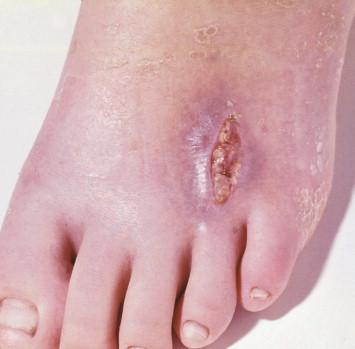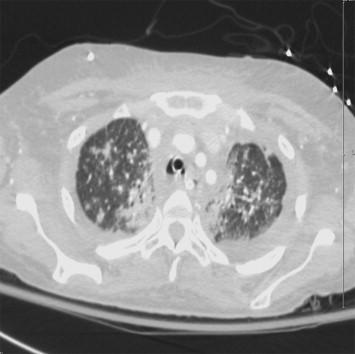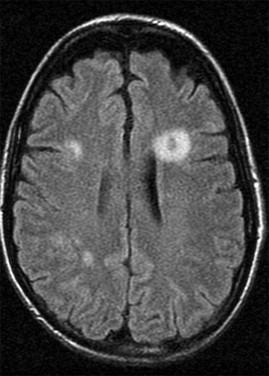Physical Address
304 North Cardinal St.
Dorchester Center, MA 02124
The microorganisms covered in this chapter all have the common characteristic of being partially acid fast but unable to retain carbol fuchsin in the presence of a strong acid decolorizer (i.e., they are not fully acid fast). This chapter, therefore, should serve as a reference for those attempting to limit the differential diagnosis of organisms with such characteristics. Many of the other aerobic actinomycetes, such as Streptomyces, are not partially acid fast but may be the causative agent of the mycetoma and are covered in the chapter specifically dedicated to that topic. The features of Nocardia -induced mycetomas are also covered elsewhere.
Most of this chapter is devoted to the Nocardia species, which are the microorganisms in this group that most frequently cause disease. There are a large number of other aerobic actinomycetes that infrequently cause disease. Others from this category that will be covered briefly include Rhodococcus, Tsukamurella, and Gordonia .
The prevalence of disease varies depending on the type of infection produced. Cutaneous and subcutaneous disease is most prevalent in tropical and subtropical climates, where the organism thrives as a saprophyte in the environment. This type of disease is usually secondary to inoculation trauma, so it is more prevalent in outdoor workers, such as agricultural laborers, who would more likely sustain such trauma. Many of these individuals live in resource-limited settings, so the presentation may include an advanced state of disease.
Many of the Nocardia species that cause pulmonary and disseminated disease are uncommon causes of cutaneous and subcutaneous infections. These occur throughout the world, but some have contended that there is an increased prevalence in the southwest United States. The prevalence of disease caused by these microorganisms is increased in populations of immunocompromised patients, particularly transplant recipients. It is critical to promptly identify and treat patients with pulmonary nocardiosis, because dissemination to the brain is common in these patients. Prompt and accurate detection and identification of Nocardia in such instances, with rapid communication to the attending physician, can be lifesaving for these patients.
These organisms may also be recovered from the respiratory specimens of patients with bronchiectasis and cystic fibrosis. It is known that these may represent colonizing microbiota, as well as pathogens, so additional clinical findings are necessary to determine the significance of these microorganisms in such a situation.
Minero and colleagues reviewed 43 patients with Nocardia -positive cultures in their hospital from 2005 to 2006. Of these, 6 were deemed to represent colonizing microbiota and were uniformly from patients with severe chronic pulmonary disease. The remaining patients, all of whom had invasive disease, each had some type of significant comorbidity, of which advanced HIV infection (i.e., AIDS) was the most common. The other comorbid conditions included chronic obstructive pulmonary disease, autoimmune diseases, solid organ transplantation, and cancer. The prior use of corticosteroids was also identified as a risk factor for infection. In addition to the more common manifestations described, Nocardia has been documented as the causative agent of septic arthritis, osteomyelitis, and keratitis.
The Nocardia are members of the order Actinomycetales. Although the precise number of recognized species in this group is in debate, approximately 50 species have been recognized. Of these, approximately 25 are recognized as human or animal pathogens. Approximately 10 species cause the majority of human disease. Although Nocardia asteroides sensu stricto may cause human disease, it produces a significantly lower burden of disease than previously thought. The majority of organisms that were previously characterized as members of the N. asteroides complex based on phenotypic identification methods are now recognized to be distinct species based on 16S rRNA gene analysis.
Nocardia brasiliensis is the species that most commonly causes cutaneous and subcutaneous infections . Nocardia otitidiscaviarum may also cause these infections, as well as the less commonly recovered N. asteroides and N. niigatensis. Many species may cause pulmonary nocardiosis with dissemination to the central nervous system and other organs. These include N. otitidiscaviarum, N. farcinica, N. cyriacigeorgica, N. transvalensis, N. paucivorans, N. nova, N. abscessus, N. beijingensis, N. pseudobrasiliensis, N. paucivorans, and N. asteroides.
The molecular studies that have been most elucidating have been the thorough assessment of the 16S rRNA genes of these organisms. This has afforded the appropriate categorization of these microorganisms, which had heretofore been difficult-to-impossible to achieve using phenotypic characteristics alone. In addition to the 16S rRNA gene, the heat-shock protein gene, hsp65, has been extensively studied. The DNA sequence derived from this target also provides useful taxonomic information.
Patients who have lymphocutaneous skin disease from a primary traumatic inoculation may have evidence of the primary inoculation on physical exam ( Figure 13-1 ). These patients have lymphadenopathy of the associated lymph nodes and may have possible draining sinuses. There may be swelling and edema of the extremity in more severe cases. Patients with cellulitis have the swelling, pain, and redness, but none of these findings specifically suggests that the infection is caused by a Nocardia species. Patients with disseminated disease often have skin involvement. These patients are severely ill and may already have the diagnosis of disseminated nocardiosis, because of pulmonary and central nervous system involvement.

The patients with pulmonary nocardiosis may be asymptomatic or have subclinical signs and symptoms during the early phases of infection. Fever, cough with mucopurulent sputa, dyspnea, weight loss, and sweats develop with progressive disease.
The involvement of the central nervous system is usually in the form of a brain abscess, but meningeal involvement may also occur. The signs and symptoms produced are like those produced by other mass lesions. These include headache, vomiting, neurologic deficits that vary depending on the site of the lesion, and seizures. Cerebral nocardiosis has been reported to clinically mimic metastatic carcinoma. The lesions have been reported in various cortical regions with a variable amount of meningeal involvement; patients so affected will have associated signs of meningeal irritation.
Hematogenous dissemination may also result in endophthalmitis and involvement of any organ. Direct extension of a pulmonary infection may result in pericarditis. Nocardia has also been documented as a cause of peritonitis in patients undergoing peritoneal dialysis.
The clinical presentation for patients with pulmonary or cerebral nocardiosis will elicit the need for a radiologic assessment of the patient. The definitive diagnosis of nocardiosis should employ both histo/cytopathology and clinical microbiology. The former can establish the cause of disease and exclude noninfectious etiologies (e.g., malignancy). The direct examination in clinical microbiology is also important as a rapid means to establish the diagnosis, whereas culture is important to obtain a viable organism to submit for definitive identification, such as susceptibility studies.
Nocardiosis (apart from mycetoma) commonly involves an extremity or occurs as an opportunistic, usually pulmonary, infection in the immunocompromised host with high risk of dissemination, particularly to the brain.
Lymphocutaneous disease and cellulitis are associated with outdoor exposure and traumatic injury.
Immunosuppressed patients are at risk for developing pulmonary nocardiosis and disseminated disease.
Lymphocutaneous disease is usually localized to an extremity. Pathology and microbiologic studies are necessary to differentiate it from other causes of similar disease (e.g., sporotrichosis, etcetera).
Patients with pulmonary nocardiosis may have an insidious onset, but eventually develop fever, chills, cough with mucopurulent sputa, dyspnea, weight loss, and sweats develop with progressive disease.
Dissemination can occur to any organ, but the brain is a common site. These patients develop the signs and symptoms of increased intracranial pressure, such as nausea and vomiting, and may have meningeal signs, depending on the involvement of the meninges.
Culture and species-level identification is critical to detect antimicrobial resistant species.
Radiologic studies are not usually necessary for patients with lymphocutaneous nocardiosis and cellulitis caused by this organism.
Pulmonary nocardiosis may appear in radiologic studies as consolidation, interstitial reticular changes, and alveolar opacification. The infiltrates are often nodular, may be multiple, and are with or without cavitation in established disease.
Nocardial brain abscesses appear as well-defined, centrally hyperintense ring-enhancing lesions with significant surrounding edema.
Good for lymphocutaneous disease and cellulitis.
Guarded-to-good for pulmonary disease detected early and treated appropriately.
Poor for progressive pulmonary and disseminated disease with brain abscess, particularly if poor prognostic factors are present and the infection is caused by an antimicrobial resistant strain.
The radiologic findings depend on the anatomic sites involved and the extent of disease. Radiologic studies are not usually necessary for patients with lymphocutaneous nocardiosis and cellulitis caused by this organism. Pulmonary nocardiosis has been reported to present with consolidation, interstitial reticular pattern, and alveolar opacification. The infiltrates are often nodular and may be multiple, with or without cavitation, in established disease ( Figure 13-2 ). Radiologic findings reported on nocardial brain abscesses include well-defined, centrally hyperintense ring-enhancing lesions ( Figure 13-3 ) with significant surrounding edema and a peripheral low signal intensity rim on T2-weighted images.


Become a Clinical Tree membership for Full access and enjoy Unlimited articles
If you are a member. Log in here